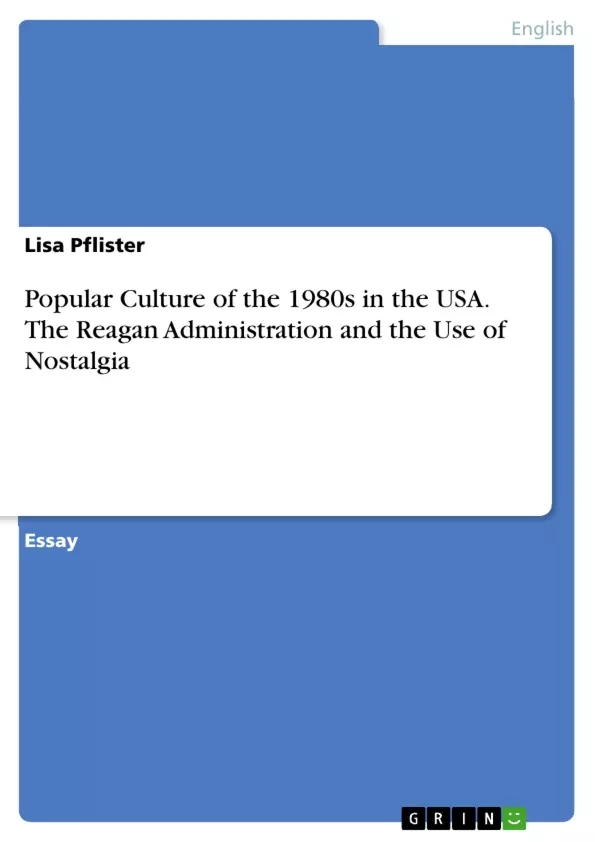This essay focuses on the early years of Ronald Reagan's presidential era and addresses the following questions in particular:
Which were the main components of the attacks on the Sixties and how were the Fifties revalidated within these attacks?
How did the Reagan administration put nostalgia in action?
How strong of an influence did the New Right/New Right social issues, according to Marcus, have on the administration’s policies?
How did President Reagan himself establish a relation to the past? Which past was rejected? Which past was embraced?
Which impression of the 1980s did you get from reading Marcus’ argument?
Table of Contents
- The Conservative Uses of Nostalgia
- Nostalgia Embodied
Objectives and Key Themes
This essay analyzes the conservative political agenda of Ronald Reagan and how it used nostalgia to revalidate the 1950s and delegitimize the 1960s.
- The conservative critique of the 1960s and its counterculture.
- The nostalgic appeal to the 1950s as a golden age of American society.
- The influence of the New Right movement on Reagan's policies.
- Reagan's own personal embodiment of 1950s values and his nostalgic vision of the American past.
- The relationship between Reagan's policies and the social and economic changes of the 1980s.
Chapter Summaries
The first chapter, "The Conservative Uses of Nostalgia," explores how conservative critics of the 1960s used nostalgia for the 1950s to argue that the social and economic problems of the 1970s were a consequence of the cultural changes of the 1960s. This chapter discusses the conservative view of the 1960s as a period of decline and destruction, highlighting the attacks on traditional values, family structures, and social order. It also analyzes how the 1950s were presented as a golden age of stability, prosperity, and national dominance. The chapter concludes by suggesting that the conservative agenda aimed to return to the policies and values of the 1950s.
The second chapter, "Nostalgia Embodied," focuses on the way Ronald Reagan embodied the nostalgic vision of the 1950s. It discusses Reagan's political strategy, which used the imagery of the 1950s to evoke a sense of national pride and American exceptionalism. The chapter explores Reagan's personal history and how he portrayed himself as a quintessential American, embodying the values of hard work, optimism, and traditional masculinity. It concludes by highlighting how Reagan's nostalgic approach to the past influenced his policies and the social climate of the 1980s.
Keywords
This essay focuses on the themes of nostalgia, conservatism, the 1950s, the 1960s, Ronald Reagan, the New Right movement, and American social and economic history. It examines how conservative political rhetoric and ideology utilized nostalgia to shape policy and social values, and how these trends influenced the political landscape of the 1980s.
- Quote paper
- Lisa Pflister (Author), 2014, Popular Culture of the 1980s in the USA. The Reagan Administration and the Use of Nostalgia, Munich, GRIN Verlag, https://www.grin.com/document/284114



